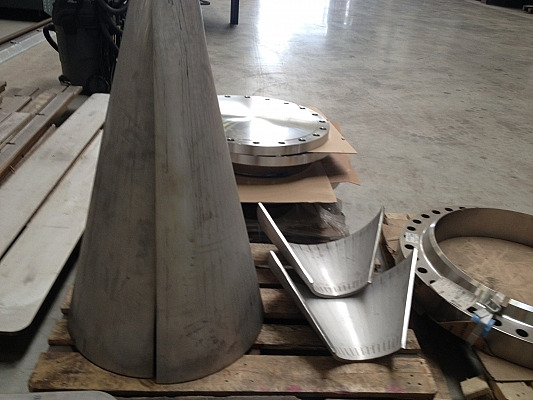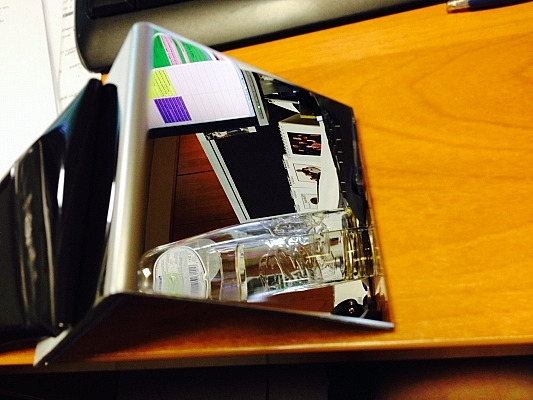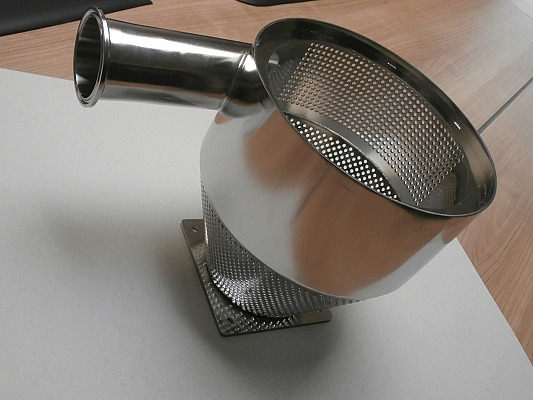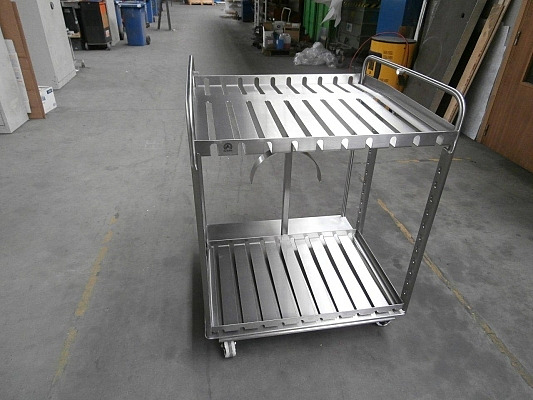Plate rolling or press brake?

Alinco has a whole range of plate rolling machines that give us the technical ability to roll sheet, cones and other reducers. You can find an overview of our plate rolling machines here. Our sister company, Deprest, also has a number of plate rolling machines which are more suitable for thicker work (they roll plate to a thickness of 40 mm). However, plate rolling has its limitations. For thicker plate, for example, for 8 mm and up, you won’t find any plate rolling machines that can centre these plates at smaller diameters. In the case of 8 mm, you need a lot of force and you can’t do that with 50 mm rollers. Even a fairly long roller bench won’t have small rollers.
A classic example here are cones. These sometimes tend to go down to small diameters. Take a cone that goes from 500 mm to 100 mm with a length of 1000 mm and a wall thickness of 6 mm. There’s no other choice than to make the cone in 2 parts and fold these instead of rolling them, and these are manufactured using segment folds. There are many folds close to each other so you get a more or less round shape. If you do this using the right folding tool, it goes fairly well.
The choice of the number of folds can be made by the customer. The problem is that customers usually don’t say and you have to decide yourself. That’s why we generally state the number of folds or the distance between them. Naturally, the rule is: the more folds, the more it resembles a rolled cone but the dearer it gets, and vice versa. The fewer folds, the more angles and a cheaper price. We always assume that the customer wants a nice, smooth cone with no angles, and we calculate the price for a lot of segment folds.
If they don’t agree, they can ask us to modify the price. Conversely, if you go elsewhere for a price and order them there, also get feedback and ask how many segment folds our colleagues provide.
The enclosed photo shows a cone manufactured using segment folds.
Karine De Bie


